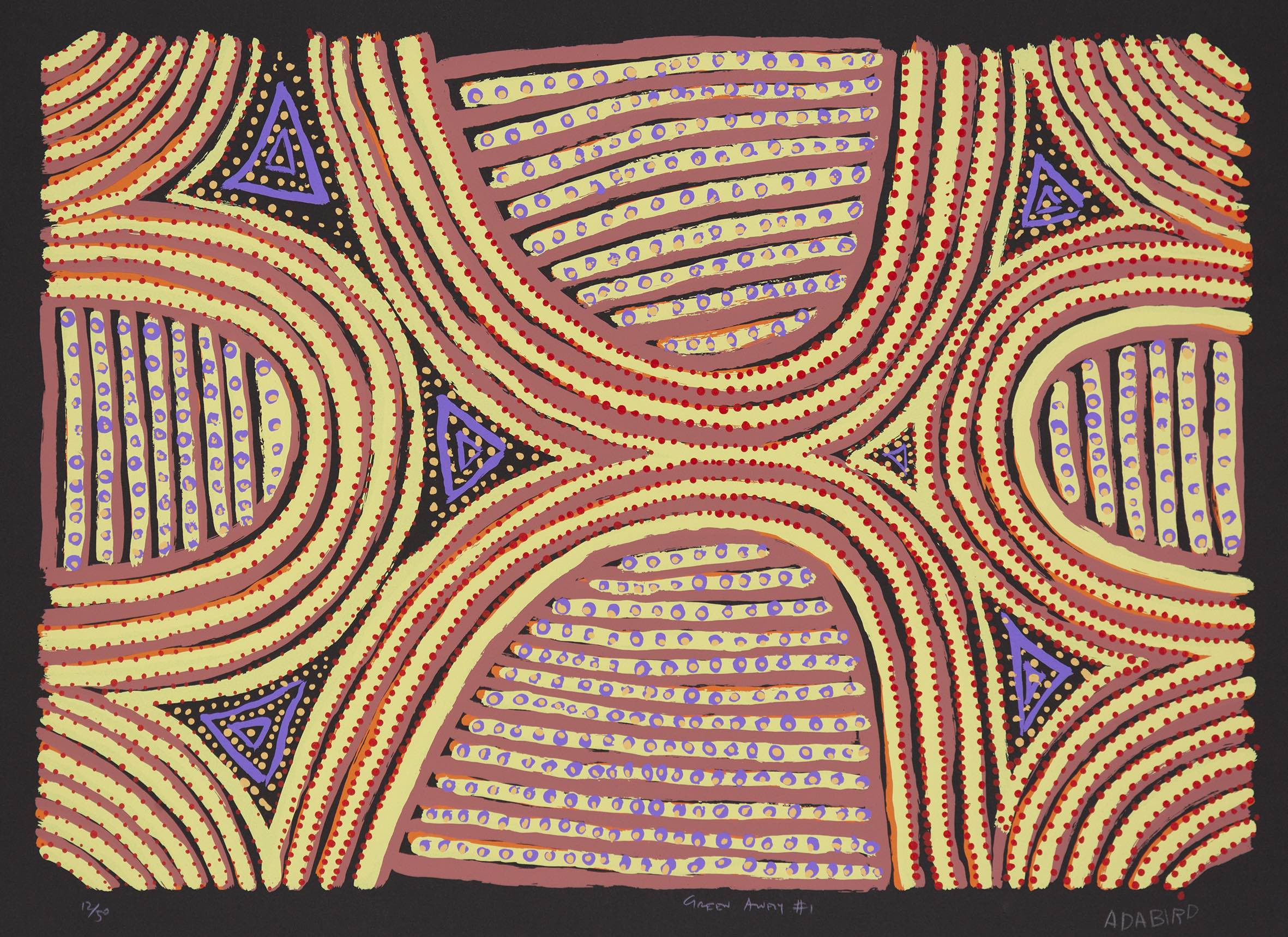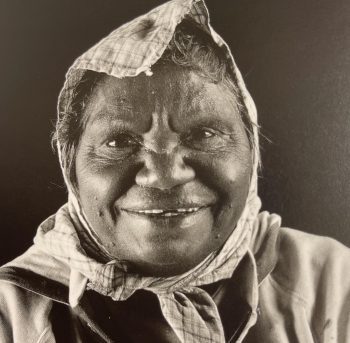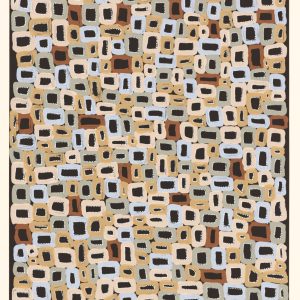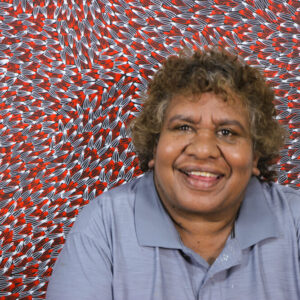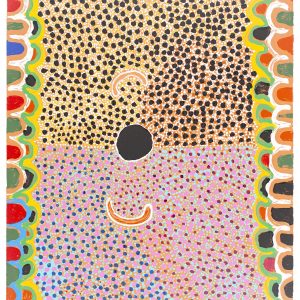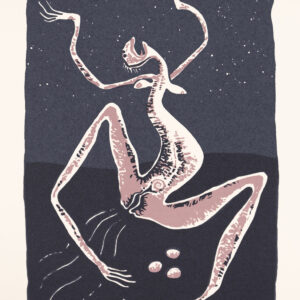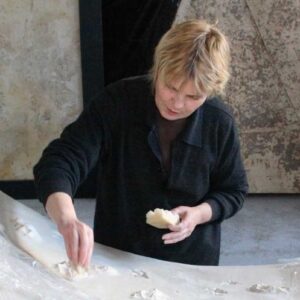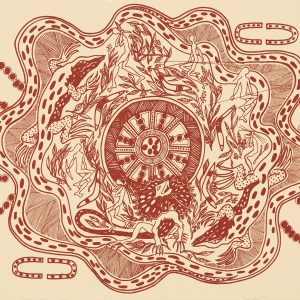Description
Artist Ada Bird Petyarre
Language Group Anmatyerre
Art Centre/ Region Utopia/ Central Desert
Title & edition number Green Awely #1
Year 1998
Size of Paper Magnani 300gsm 42 x 60cm : 56 x 76cm
Catalogue Number ABGAW
Printer Red Hand Prints
Provenance Utopia Awely Batik Aboriginal Corporation
Aboriginal Fertility prints
This is one of a range of 14 limited edition screen-prints on paper exclusively available through Songlines. The prints have not been exhibited or offered for sale since 1999, the year they were created by eight Indigenous women artists. Images of the prints were used as slides by Fay Nelson, then Director Aboriginal Arts Board, Australia Council, in her keynote address at the landmark Sydney IVF Fertility Conference held at Darling Harbour Conference Centre.
The prints and Dr Nelson’s essay ‘Aboriginal Fertility’ are documented in the conference proceedings published as Towards Reproductive Certainty – Fertility and Genetics beyond 1999 edited by Robert Jansen and David Mortimer with the assistance of Karen Coote, published by The Parthenon Publishing Group.
Biography
Ada Bird Petyarre was a significant contributor to one of the most important art movements to emerge from the desert – “the Utopia Women”. As one of the senior women at Utopia and a traditional Anmatyerre elder (her country was Atnangkere), Ada took her cultural obligations very seriously which is reflected in her artworks that depict her Ancestral Creation Stories (Dreamings) and the associated women’s ceremonies.
Born on the Old Utopia Station at Atangkere, Ada comes from a large family, one of seven sisters; Kathleen, Gloria, Myrtle, Violet, Nancy and Jean, all of whom were also notable artists. Ada also had six children of her own, two daughters June and Hilda and four sons, Paddy, Colin, Stephen and Ronnie.
Living at Mulga Bore (Akaye Soakage), Ada was involved with the Utopia Women’s Batik group in the late 70’s, where her work was exhibited and now held in major collections in Australia and internationally, as well as being featured on the cover of the publication “Utopia – A Picture Story” (1990), a book based on an exhibition of 88 works on silk by the Utopia artists which toured Eire and Scotland. The German filmmaker, Wim Wenders acquired one of her batiks and gave the artist a role in one of his films, that was partially shot in Central Australia.
Ada subsequently began painting with acrylics in 1988 during the CAAMA (Central Australian Aboriginal Media Association) Summer Project. In late ’89 the National Gallery of Australia in Canberra acquired a major canvas, and her works were soon to be added to many public and private collections.
In 1990 Ada had her first solo exhibition at Utopia Art in Sydney. Her work also appeared in the publication The Art of Utopia, M. Boulter, (Craftsman House, Sydney, 1991).
Ada’s talent was obvious and she had a unique style, leaving a legacy of works that range from delicate, to others with strong bright colours and bold linear patterns. She also painted in the more traditional and subdued colours, her favoured works being based on the women’s ceremonial body paint designs (awelye) for the Mountain Devil Lizard (Arnkerrthe).
Ada suffered a stroke in 2004 that ended her career in painting, and was cared for in Alice Springs until her passing in June 2009.
With thanks to Gallery Gondwana.
Collections
- Mbantua Gallery Permanent Collection, Alice Springs
- Art Gallery of New South Wales, Sydney
- National Gallery of Australia, Canberra
- The Holmes á Court Collection, Perth
- The Kelton Foundation, Santa Monica USA
- University of Queensland, Anthropology Museum, St Lucia
Solo Exhibitions
| 1990 | Utopia Art, Sydney |
| 1999 | Mbantua Gallery, Alice Springs |
| 1999 | Ginninderra Galleries, Canberra |
| 2000 | Mbantua Gallery, Alice Springs |
| 2002 | Mbantua Gallery, Alice Springs |
Exhibitions
| 2000 | Artists of Utopia, Tandanya, S.A |
| 2000 | Utopia Women Red Desert Gallery, Eumundi, Qld/Sunshine Coast University/Noosa Blue Resort, Noosa Qld |
| 2001 | Young Presidents Organization University, Westin Hotel, Pitt Street, Sydney |
| 2001 | Walkabout Indigenous Art Gallery, Leichardt, Sydney |
| 2001 | Painting Country, Tandanya, S.A |
| 2001 | De Beer’s Collection, Brookdale Galleries, QLD |
| 2001 | Seven Sisters Petyarre, Brisbane City Gallery, Brisbane |
| 2002 | Redback Art August exhibition |
| 2002 | Mbantua Gallery USA exhibitions: New City Merchants, Knoxville, TN; Art and Soul Gallery, Nashville, TN; ‘The Cove Gallery’ Portland, OR; Urban Wine Works, Portland, OR; Mary’s Woods, Portland, OR |
| 2003 | Seven Sisters, Chrissie Cotter Gallery, Sydney |
| 2003 | Mbantua Gallery USA exhibitions: New City Merchants, Knoxville, TN; Art and Soul Gallery, Nashville, TN; ‘The Cove Gallery’ Portland, OR; Mary’s Woods, Portland, OR |
| 2003 | Mbantua Gallery – Contemporary Aboriginal Art Event, Umpqua Bank, Portland, OR, USA |
| 2004 | Mbantua Gallery USA exhibition; Portland, Nashville, Knoxville, Hartford and Greenwich |
Further References
| Brody, A. |
1989 Utopia Women’s Paintings The First Works on Canvas, A Summer Project 1988-89, exhib.cat., Heytesbury Holdings, Perth. |
| Brody, A. | 1990, Utopia: a Picture Story, 88 Silk Batiks from the Robert Holmes a Court Collection |
| Morphy Howard | Aboriginal Art, Phaidon 1998
|

